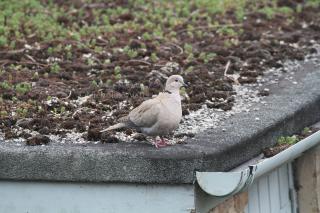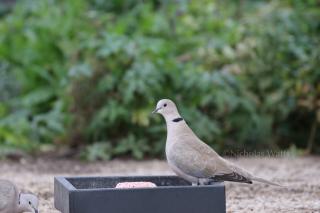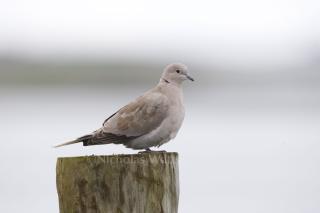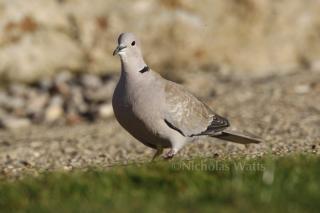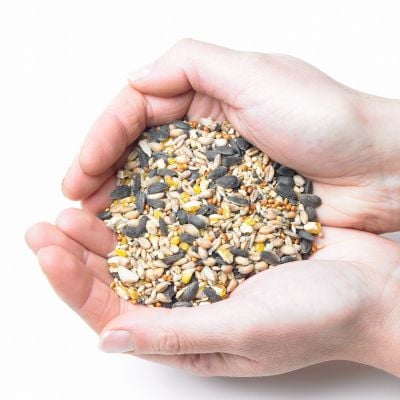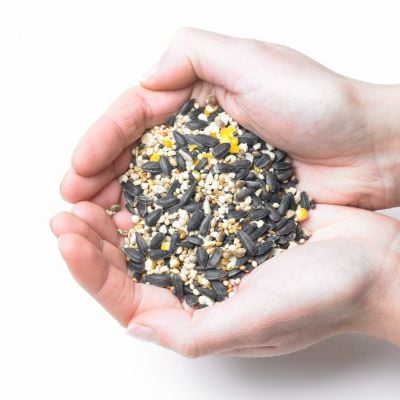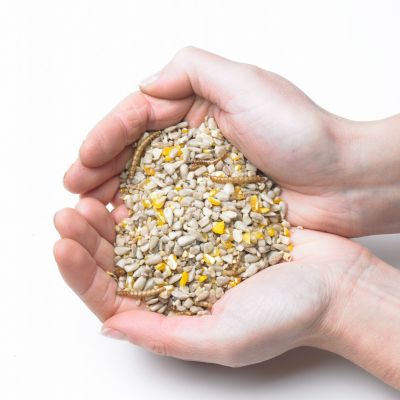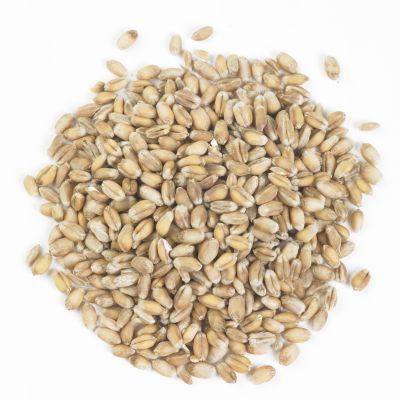Collared Dove Factfile
Although now common through much of the UK, in particular where there’s human habitation, Collared Doves only first bred in the UK in 1955. This followed a rapid expansion from their historic breeding range in Asia Minor and the MIddle East, to across Europe, and, once initially established in the UK, the species continued to spread and is now a common bird with nearly 1 million breeding pairs. An attractive bird, the plumage of the Collared Dove is a mix of pinkish sandy-brown and grey. Both male and female birds have the distinct black half-collar finely outlined with white around the nape of the neck. The young do not develop this collar until after their first moult.
Collared Dove nesting and breeding habits
The nest is a somewhat unimpressive and sparse platform of twigs and leaves, and sited in a tree on suitable branches. They have a preference for evergreen trees, and species such as Leylandi are ideal and hence why Collared Doves often nest in urban gardens. Both sexes share the incubation of the two eggs, and there are normally three or even up to six broods per year. The breeding period is typically March to September, but if enough food is available (which is largely seed and grain) then breeding will also take place in the winter months. The young are fed with ‘crop milk’ rather than the food the adults directly eat.
Collared Dove history and population trends
The population in the UK has gone from nothing in pre-1955 to close on one million breeding pairs now. The current population is relatively stable though has declined overall slightly in recent years, with some areas of the UK seeing a slight increase in numbers but others a decline.
Behaviour traits of Collared Doves
The Collared Dove is a relatively tame bird and has evolved to co-exist with humans. Normally seen singularly or in pairs, where there is plentiful food they will also form small flocks. However, in their breeding territory they can be very aggressive and will often frighten off smaller birds around feeding stations. Male birds will often spend long periods of time perched in an exposed spot such as on the top of a lamppost or roof and make a monotonous ‘cooing’ song.
Collared Dove diet and food
Food is almost entirely seed and grain, though will also eat shoots, berries and some invertebrates. The dependence on seed and grain is the principle reason the species is associated to such an extent with human habitation. As the Collared Dove is a ground feeder, any food put out for them will need to be on a bird table, ground feeding tray, or direct on the ground. However, if a tray is secured to the bottom of a hanging feeder they will use this as a platform to take seed from the feeder. They are not especially fussy about the type of seed or grain they eat, and will digest the husks rather than removing them in the way some other birds do. However, smaller seeds are preferred if the husk is still on. From the VHF range, any of our seed mixes and husk-free mixes will attract Collared Doves, plus straights including wheat.
What should I feed Collared Doves?
We recommend the following products to help attract Collared Doves to your garden.
Bird Food
Frequently Asked Questions
Is a Collared dove a pigeon?
Yes, the Collared dove is in the pigeon family – or more precisely the ‘pigeons and doves family’.
Are Collared doves friendly?
Collared doves are a relatively social species of bird, with the small flocks visiting gardens and becoming fairly tame over time if food is provided.
What do you feed a Collared dove?
The best food for Collared doves is a good quality seed mix, though the species will eat most types of seed and especially sunflower hearts. What’s more important is how the seed is provided, because, as a ground feeding species, Collared doves cannot use hanging tube feeders. So spread seed for them on a bird table, ground tray or direct on flat ground such as a patio.
How do I attract Collared Doves to my garden?
Providing bird seed on a flat surface such as a bird table or ground tray is how you best attract Collared doves to your garden.
Will Collared Doves use a dovecote?
No, Collared doves will not use a dovecote as they avoid confined spaces, with their nest being an open cup structure which is built in a tree or tall shrub.


